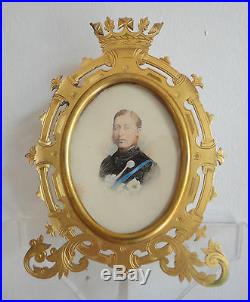
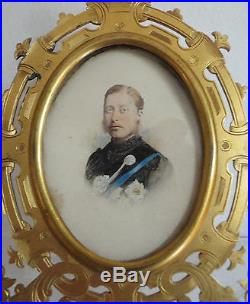
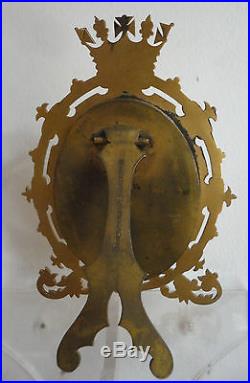
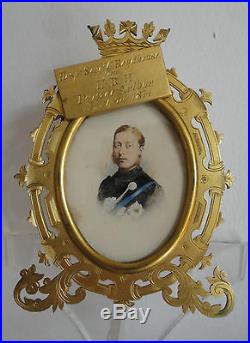
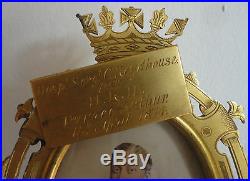

Bibelotslondon Ltd is a UK registered company based in London Bridge dealing in ephemera and curiosities from Britain and around the world. Our diverse inventory is carefully chosen and constantly evolving. We work very hard to offer the highest quality works at competitive prices. Our inventory is listed online, and we strive to keep our website completely up to date, so our customers can easily check availability. We believe in offering clients items that are unique and rare for aficionados of the antique and collector’s world. Bibelot is a late nineteenth century word derived from the French word bel beautiful, meaning a small item of beauty, curiosity or interest. The word ephemera is derived from the sixteenth century Greek word ephmera meaning a printed or hand written paper not meant to be retained for a long period of time. He was formerly a Hospital Sergeant of the Rifle Brigade (Prince Consort’s Own) and probably fought with the Prince. It was designed by George Gilbert Scott and William Boynthan Moffat. The frame was made by Maull & Co of Piccadilly in London and is stamped on the strut. It holds a hand coloured CDV photo of the Prince as a young man in military dress. The back cannot be removed and was sealed shut at its time of construction. The gilt label is removable. The Westminster Budget’ dated 7th April 1893 commented on the Prince of Wales, later King Edward VII visiting the workhouse and seeing the gilt frame: The Prince of Wales took advantage of his visit to Lord and Lady Brooke at Easton Lodge to inspect the Dunmow Union Workhouse. The Prince examined every department of the building, including the infirmary and casual ward; the clothing, bedding, and dietary were also made the subject of careful inquiry; and before leaving His Royal Highness made the following memorandum in the visitors’ book : Have visited this Union with great interest, and found everything in excellent order. Albert Edward -The Prince expressed himself particularly pleased with the appearance of the children, thoroughly approving the action of the Guardians in not providing them with a charity garb and in sending them to elementary schools in the town. His Royal Higl ness noticed with pleasure a portrait of the Duke of Connaught in a gold frame, upon which is inscribed’Hospital-Sergeant C. The Rifle Brigade (The Prince Consort’s Own) was an infantry rifle regiment of the British Army. Formed in January 1800 as the “Experimental Corps of Riflemen” to provide sharpshooters, scouts and skirmishers, they were soon renamed the “Rifle Corps”. In January 1803 they became an established regular regiment and were titled the 95th Regiment of Foot (Rifles). In 1816, at the end of the Napoleonic Wars, they were again renamed, this time as the “Rifle Brigade”. The unit was distinguished by its use of green uniforms as standard in place of the traditional redcoat, as well as being armed with the first British-made rifle accepted by the British Army, in place of smooth-bore muskets the first regular infantry corps in the British Army to be so. After distinguished service in both the First and the Second World Wars, the regiment was amalgamated with the 1st Green Jackets (43rd and 52nd) and the King’s Royal Rifle Corps to form the Royal Green Jackets on 1 January 1966. In 1852 Prince Albert, the Prince Consort took over the role of Colonel-in-Chief. When the Crimean War broke out in 1853 the Rifle Brigade sent two battalions which fought at the Battle of Alma, where one of the battalions led the advance across the Alma River in September 1854. The regiment also saw action at the Battle of Inkerman in November 1854 and at the Siege of Sevastopol in Winter 1854. Eight members of the Regiment were awarded Victoria Crosses during the Crimean War. The regiment was deployed again as part of the Indian Rebellion and saw action at the Siege of Lucknow in Autumn 1857. It was granted the title “The Prince Consort’s Own Rifle Brigade” in honour of its colonel-in-Chief on 17 January 1862.. In 1866, Private Timothy O’Hea of the 1st Battalion, was awarded the Victoria Cross for an act of bravery in peacetime, while his unit was stationed in Canada. On 9 June 1866, at Danville, Quebec, on the main railway between Montreal and Quebec City, a fire broke out in a car containing 2,000 lb (900 kg) of ammunition. Despite the extreme danger, O’Hea took charge of extinguishing the fire and saved many lives. The regiment also took part in the Battle of Ali Masjid in November 1878 during the Second Anglo-Afghan War, the Mahsud Waziri expedition in 1881, the Third Anglo-Burmese War in 1885, the Fourth Anglo-Ashanti War in 1895 and the Mahdist War in 1898. The 1st Battalion was deployed to South Africa in 1899 and saw action at the Battle of Colenso in December 1899 and Battle of Vaal Krantz in February 1900 while the 2nd Battalion took part in the Siege of Ladysmith in winter 1899 during the Second Boer War. Prince Arthur was the seventh child and third son of Queen Victoria and Prince Albert of Saxe-Coburg and Gotha, Arthur was educated by private tutors before entering the Royal Military Academy, Woolwich at the age of 16. Upon graduation, he was commissioned as a lieutenant in the British Army, where he served for some 40 years, seeing service in various parts of the British Empire. During this time he was also created a royal duke, becoming the Duke of Connaught and Strathearn, as well as the Earl of Sussex. In 1911, he was appointed as Governor General of Canada, replacing the Earl Grey as viceroy. He occupied this post until being succeeded by the Duke of Devonshire in 1916. Given his military service, the selection of Arthur proved to be prudent, as he acted as the King’s, and thus the Canadian Commander-in-Chief’s, representative through the first years of the First World War. Though he retired from public life in 1928, he continued to make his presence known in the army well into the Second World War, before his death in 1942. He was Queen Victoria’s last surviving son. Overall Size: 15 x 10.5 cm approx. Photos form part of the description. The item “Prince Arthur Royal Victorian Presentation Frame Photo 1874 Chelsea Pensioner” is in sale since Monday, March 12, 2018. This item is in the category “Collectables\Historical Memorabilia\Royalty Collectables”. The seller is “bibelotslondon” and is located in london. This item can be shipped worldwide.
- Type: Photos in Royal Presentation Frame
- Features: Antique
- Royal/ Reign: Victoria (1837-1901)
- Royal: Victoria (1837-1901)
